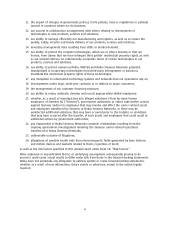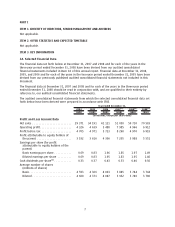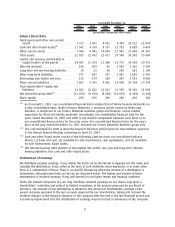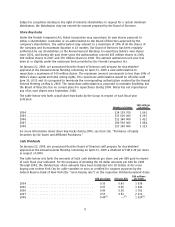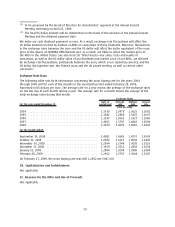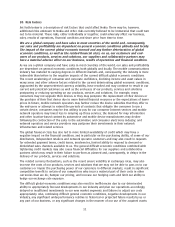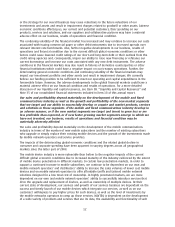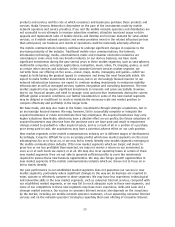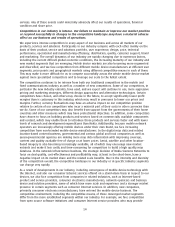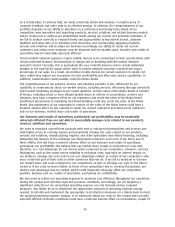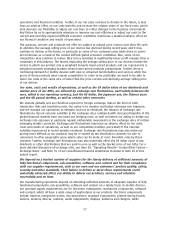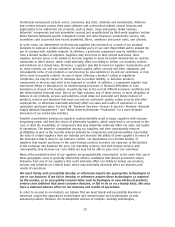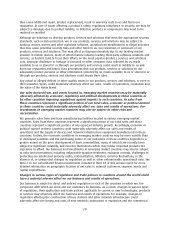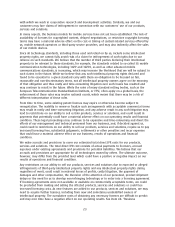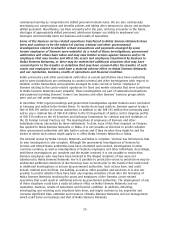Nokia 2008 Annual Report Download - page 17
Download and view the complete annual report
Please find page 17 of the 2008 Nokia annual report below. You can navigate through the pages in the report by either clicking on the pages listed below, or by using the keyword search tool below to find specific information within the annual report.on a timely basis. To achieve that, we must constantly obtain and evaluate a complex array of
customer feedback and other data in an efficient manner. In addition, the competitiveness of our
portfolio depends on our ability to introduce on a continuous and timely basis ahead of our
competitors new innovative and appealing products, services, solutions and related business models
and to create new or address yet unidentified needs among our current and potential customers. If
we fail to analyze correctly or respond timely and appropriately to key market trends, customer
feedback and other data or to introduce new innovative and commercially appealing products,
services and solutions and to adapt our business accordingly, our ability to retain our current
customers and attract new customers may be impaired and our market share, business and results of
operations may be materially adversely affected.
Certain mobile network operators require mobile devices to be customized to their specifications with
certain preferred features, functionalities or design and cobranding with the mobile network
operator’s brand. Currently, this is particularly the case in North America and in certain individual
markets in the AsiaPacific region where sales to mobile network operators represent the major
percentage of our sales. As a result, we produce mobile devices for certain operators in smaller lot
sizes, which may impact our economies of scale, profitability and aftersales service capabilities. In
addition, customization could possibly erode the Nokia brand.
The competitiveness of our product, services and solutions portfolio is also influenced by our
capability to communicate about our mobile devices, including services, effectively through consistent
and focused marketing messages to the target audience, and the value of the Nokia brand. A number
of factors, including actual or even alleged quality issues or defects in our products, services and
solutions, may have a negative effect on our reputation and erode the value of the Nokia brand.
Insufficient investments in marketing and brand building could also erode the value of the Nokia
brand. Any impairment of our reputation or erosion of the value of the Nokia brand could have a
material adverse effect on our capacity to retain our current customers and attract new customers
and on our business, market share and results of operations.
Our business and results of operations, particularly our profitability, may be materially
adversely affected if we are not able to successfully manage costs related to our products,
services, solutions and operations.
We need to introduce costefficient products with new or enhanced functionalities and services and
with higher prices in a timely manner and proactively manage the costs related to our products,
services and solutions, manufacturing, logistics and other operations and related licensing, including
mitigating the impacts of the exchange rate fluctuations related to such costs. If we fail in any of
these efforts, this will have a material adverse effect on our business and results of operations,
particularly our profitability. We believe that our market share results in economies of scale and,
therefore, in a cost advantage for our devices when compared to our competitors. However, currency
fluctuations, such as the recent severe volatility in exchange rates, may have an adverse impact on
our ability to manage our costs and on our cost advantage relative to certain of our competitors who
incur a material part of their costs in other currencies than we do. If we fail to maintain or increase
our market share and scale compared to our competitors as well as leverage our scale to the fullest
extent or if our costs increase relative to those of our competitors due to currency fluctuations, our
relative cost advantage may be eroded, which could materially adversely affect our competitive
position, business and our results of operations, particularly our profitability.
We also need to reduce our operating expenses to maintain cost efficiency throughout our operations
during the current and currently expected economic conditions. Accordingly, we are targeting a
significant reduction in our annualized operating expense run rate through various targeted
measures. Any failure by us to determine the appropriate amounts of operating expense savings
needed, to identify and implement the appropriate cost reduction measures on a timely basis to meet
the targeted operating expense savings, or to otherwise adjust our costs to the current and currently
expected difficult economic conditions could have a material adverse effect on our business, results of
16


